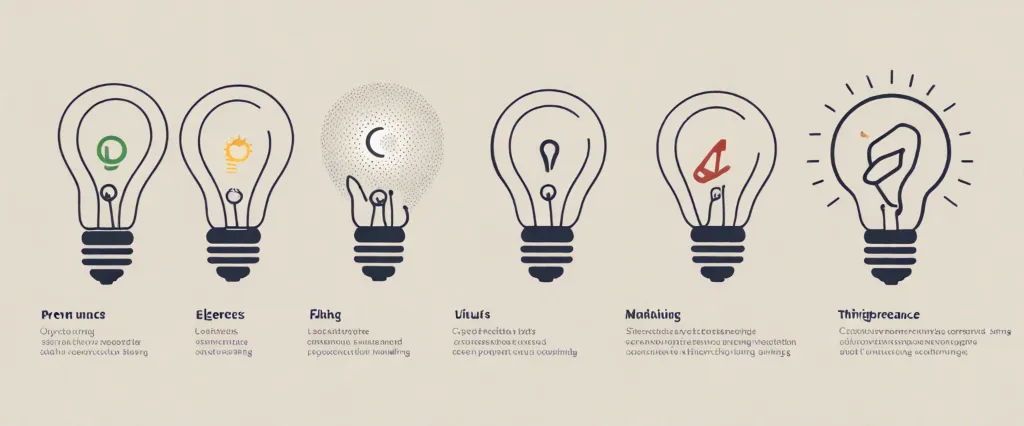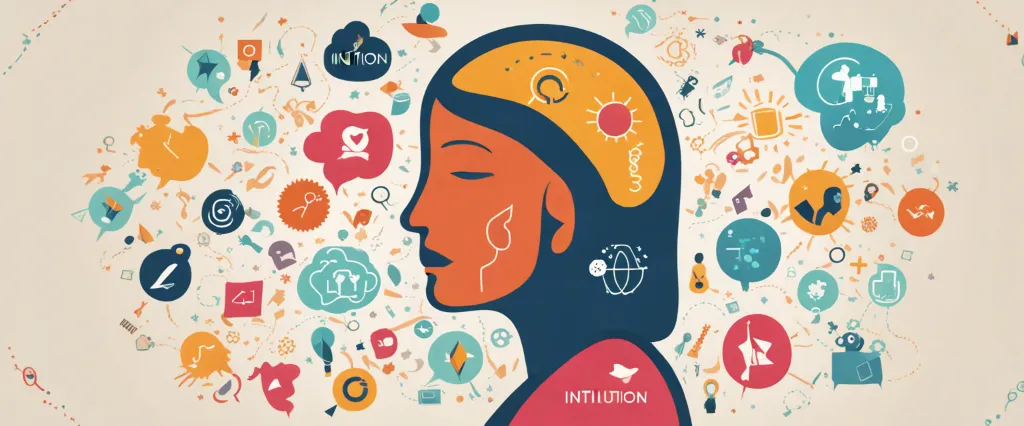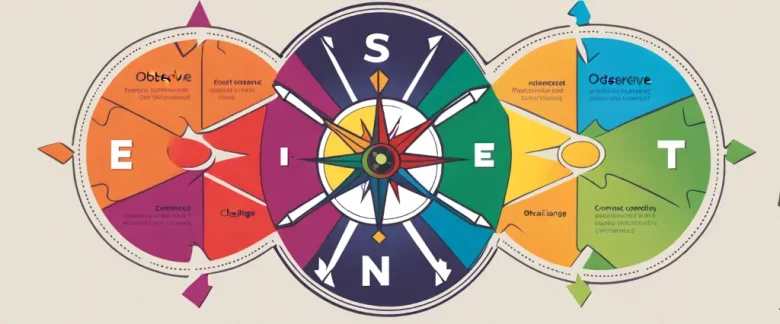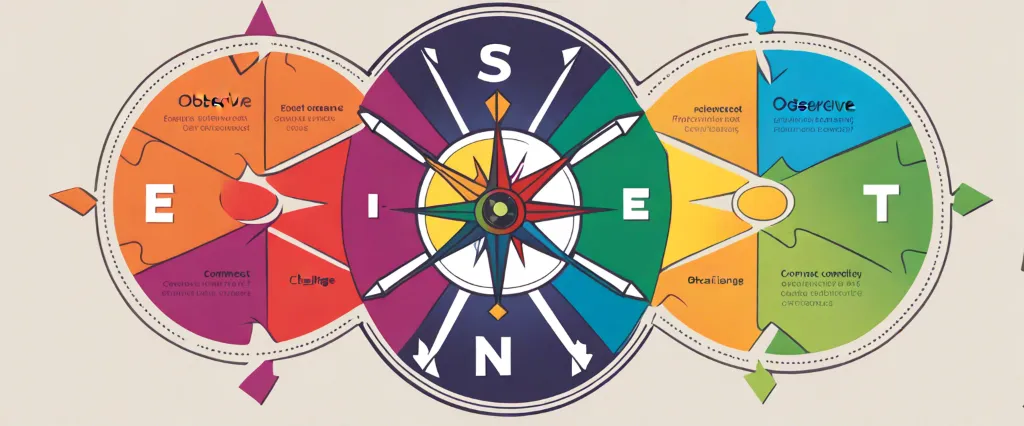In “The 5 Elements of Effective Thinking,” renowned mathematician and educator Edward B. Burger provides readers with a unique guide to improving their thinking skills and becoming more effective problem solvers. In this groundbreaking book, Burger explores the essential elements that underlie effective thinking, presenting a set of practical strategies and tools that can be applied to various aspects of life. With his vast teaching experience and expertise in mathematics, Burger offers invaluable insights to help readers enhance their thinking abilities and overcome intellectual challenges. By incorporating these elements into their everyday lives, individuals can unlock their true potential and cultivate a mindset geared towards success and innovation.
Chapter 1: Beginning with Curiosity
Chapter 1: Beginning with Curiosity from the book “The 5 Elements of Effective Thinking” by Edward B. Burger introduces the crucial role of curiosity in the process of effective thinking. It emphasizes that curiosity is the driving force behind learning, growth, and innovation, and encourages readers to actively cultivate and nurture this trait.
The chapter begins with a thought-provoking story of how a simple childhood curiosity led to the discovery of X-rays by Wilhelm Conrad Roentgen. This anecdote highlights the immense potential hidden within our innate curiosity and the endless possibilities it can unlock.
Burger then explains that curiosity is more than just asking questions; it involves a deep commitment to exploring and understanding the unknown. He suggests that in order to truly engage with curiosity, we must embrace a beginner’s mindset and unlearn preconceived notions and biases that might hinder our progress.
The chapter introduces the concept of “knowledge gaps,” areas where our understanding is incomplete or shaky. Instead of shying away from these gaps, the book encourages readers to actively seek and acknowledge them. Curiosity thrives on these knowledge gaps, as they present opportunities to learn and grow.
Furthermore, the chapter emphasizes the importance of curiosity in the face of failures and setbacks. Curiosity allows us to reframe these challenges as opportunities for growth and learning, encouraging us to explore alternative paths forward and overcome obstacles.
In summary, Chapter 1 of “The 5 Elements of Effective Thinking” highlights the significance of curiosity in driving effective thinking. It encourages readers to embrace a beginner’s mindset and actively seek out knowledge gaps as opportunities for growth and exploration. By cultivating curiosity, individuals can unlock their full potential and embrace a more effective approach to thinking.
Chapter 2: Mastering Deep Thinking
Chapter 2: Mastering Deep Thinking of the book The 5 Elements of Effective Thinking by Edward B. Burger focuses on the concept of deep thinking and how to cultivate it. The chapter begins by emphasizing the importance of deep thinking in solving complex problems and making meaningful connections.
The authors believe that deep thinking requires a shift in mindset, moving away from merely memorizing information and regurgitating it. Instead, they stress the significance of actively engaging with ideas and seeking connections between different disciplines. They argue that by fostering curiosity and a hunger for knowledge, individuals can enhance their ability to think deeply.
The chapter introduces five strategies to help readers develop a deep-thinking mindset. First, the authors advise embracing the ability to question and challenge assumptions. By questioning, individuals can uncover hidden opportunities and discover alternative ways of approaching problems.
Second, the authors emphasize the importance of observing details and paying attention to patterns. By noticing even the smallest details, one can uncover patterns and relationships that may otherwise go unnoticed. To facilitate this, the authors suggest taking the time to slow down, be mindful, and truly observe the world around us.
Third, the authors encourage readers to connect the dots between different disciplines and ideas. They argue that by developing a multidisciplinary approach to problem-solving, individuals can find innovative solutions. This involves seeking inspiration from a wide range of sources and attempting to apply concepts from one domain to another.
Fourth, the authors advocate for embracing the power of associative thinking, which involves linking seemingly unrelated ideas together. They encourage readers to explore analogies, metaphors, and other forms of creative thinking to establish connections between different concepts.
Lastly, the authors stress the importance of embracing failure and learning from it. They encourage readers not to fear making mistakes, as they provide valuable opportunities for growth and learning.
In conclusion, Chapter 2 introduces readers to the concept of deep thinking and provides practical strategies to cultivate this mindset. By questioning assumptions, observing details, making connections, engaging in associative thinking, and learning from failure, individuals can enhance their ability to think deeply and approach problems from a fresh perspective.
Chapter 3: Challenging Conventional Wisdom
Chapter 3 of “The 5 Elements of Effective Thinking,” titled “Challenging Conventional Wisdom,” explores the importance of questioning and challenging the conventional ideas and assumptions that often hinder our thinking and limit our potential. The chapter emphasizes the significance of embracing a critical mindset and being willing to question accepted wisdom in order to gain deeper insights and spark creativity.
The chapter begins by discussing how we are all influenced by our mental models, which are the frameworks through which we understand and interpret the world. While mental models can be useful in simplifying complex information, they can also blind us to alternative possibilities and hinder our ability to think critically. The authors stress the importance of examining our mental models and deliberately challenging them in order to uncover alternative perspectives and solutions.
To challenge conventional wisdom effectively, the authors propose a “One-Liner Revolution” approach. This technique involves condensing a concept or idea into a concise and often surprising statement that challenges people’s assumptions. By distilling complex ideas into brief, thought-provoking statements, we can challenge our own assumptions and those of others, encouraging more nuanced thinking and opening up new possibilities.
The chapter offers several real-life examples of successful One-Liner Revolutions, such as mathematician Georg Cantor’s statement that there are different sizes of infinity. By challenging the long-held belief that infinity is a singular concept, Cantor revolutionized the field of mathematics. The authors also encourage readers to proactively seek out examples of conventional wisdom being challenged in their own fields and to use the One-Liner Revolution approach as a tool for personal growth and intellectual development.
In summary, Chapter 3 of “The 5 Elements of Effective Thinking” advocates for challenging conventional wisdom to overcome limited thinking and encourage innovation. It stresses the importance of critically examining our mental models, questioning assumptions, and condensing complex ideas into concise statements that challenge conventional thinking. By embracing a critical mindset and actively challenging accepted wisdom, we can expand our understanding, foster creativity, and discover new solutions to old problems.
Chapter 4: Seeing the Invisible

Chapter 4: Seeing the Invisible of the book The 5 Elements of Effective Thinking by Edward B. Burger focuses on the importance of developing the skill to recognize and understand the invisible aspects of a problem or situation. The chapter emphasizes that embracing the invisible allows individuals to perceive deeper patterns and connections, enabling them to solve problems more effectively.
The authors begin by discussing the concept of “invisibility” and its role in effective thinking. They argue that what is often invisible is either too abstract or hidden within a complex web of information, making it challenging to recognize. However, they stress that by acknowledging and actively seeking out the invisible elements, individuals can gain deeper insights and develop more effective solutions.
The chapter then presents several strategies to help readers see the invisible. These include using analogies and metaphors to simplify complex ideas, asking “what if” questions to explore alternative possibilities, and practicing visualization to enhance creativity and problem-solving abilities. The authors also stress the importance of keeping an open mind and embracing ambiguity, as this can lead to new perspectives and deeper understanding.
Furthermore, the chapter provides real-life examples and anecdotes to illustrate the power of seeing the invisible. It shows how recognizing invisible connections in various fields, such as science, art, and business, has led to significant breakthroughs and innovative solutions.
Overall, Chapter 4 of The 5 Elements of Effective Thinking highlights the importance of developing the skill to perceive the invisible aspects of a problem or situation. By actively seeking the invisible and embracing ambiguity, individuals can gain deeper insights, uncover hidden patterns, and ultimately enhance their problem-solving abilities.
Chapter 5: Learning from Mistakes
Chapter 5 of “The 5 Elements of Effective Thinking” by Edward B. Burger explores the concept of learning from mistakes. The author emphasizes that mistakes should not be seen as failures but as opportunities for growth and improvement.
The chapter begins by discussing the importance of embracing mistakes as an essential part of the learning process. Burger argues that society often stigmatizes mistakes, leading individuals to fear failure and avoid taking risks. However, by viewing mistakes as valuable learning experiences, one can foster a growth mindset. Embracing mistakes opens up opportunities for new ideas and alternative approaches to problem-solving.
Burger introduces the concept of “FAIL” (First Attempt In Learning), encouraging readers to reframe mistakes positively. He urges individuals to embrace and analyze their mistakes, seeking to understand the underlying causes and identify the lessons they can learn from them. By doing so, one can transform mistakes into stepping stones towards success.
Furthermore, the author highlights the importance of perseverance and resilience in the face of errors. He argues that failure is not the end but a stepping stone on the path to improvement. Burger emphasizes the need to maintain a growth mindset, constantly seeking opportunities to learn and grow from mistakes.
The chapter concludes with practical strategies for maximizing the learning potential of mistakes. Burger suggests creating a mistake diary to document and reflect on errors, seeking feedback from others, and actively engaging in deliberate practice to refine skills and knowledge.
Overall, Chapter 5 of “The 5 Elements of Effective Thinking” encourages readers to reframe their perspective on mistakes, viewing them as essential for personal growth and improvement. Burger reinforces that by learning from mistakes, individuals can become more effective thinkers and ultimately achieve greater success.
Chapter 6: Discovering Patterns
In Chapter 6 of “The 5 Elements of Effective Thinking,” titled “Discovering Patterns,” Edward B. Burger explores the importance of recognizing patterns and how it can enhance our thinking abilities. The chapter emphasizes that pattern recognition is at the core of human intelligence and plays a crucial role in problem-solving, decision-making, and gaining insights.
Burger begins by introducing the concept of “chunking” as a way to make sense of an overwhelming amount of information. Chunking involves identifying patterns and grouping similar elements together, allowing us to process information more efficiently. By recognizing patterns, our brains can simplify complex ideas and make connections between seemingly unrelated concepts.
The chapter also emphasizes the significance of embracing mistakes and failures as opportunities for growth. Burger argues that mistakes often result from incomplete or incorrect patterns, and by analyzing these errors, we can refine our patterns of thinking and improve our overall understanding of a subject.
Moreover, the book encourages readers to “think outside the box” by challenging established patterns and searching for alternatives. The chapter provides multiple examples of how creative thinking, combined with pattern recognition, can lead to groundbreaking innovations across various fields.
Additionally, Burger highlights the importance of balancing pattern recognition with critical thinking. While recognizing patterns is valuable, blindly adhering to them can limit our ability to consider new perspectives and fresh ideas. By inculcating critical thinking skills parallel to pattern recognition, we can develop a more comprehensive approach to problem-solving and decision-making.
In summary, Chapter 6 of “The 5 Elements of Effective Thinking” emphasizes the significance of pattern recognition in enhancing our thinking abilities. By recognizing patterns, we can effectively process information, learn from mistakes, think creatively, and make better decisions. Balancing pattern recognition with critical thinking is important to avoid becoming too rigid in our thinking and to foster adaptability in a rapidly changing world.
Chapter 7: Thinking in Context
Chapter 7 of “The 5 Elements of Effective Thinking” by Edward B. Burger introduces the idea of thinking in context and emphasizes the importance of considering different perspectives and broader contexts to enhance our understanding and problem-solving abilities. The chapter delves into the three key themes: weighted thinking, stepping out, and systems thinking.
Weighted thinking refers to giving appropriate importance to different aspects of a problem. Just as some elements in a complex system contribute more heavily to the whole, certain details warrant more attention, while others should be disregarded. To cultivate weighted thinking, one must understand the underlying principles and determine what genuinely matters in a given context.
Stepping out encourages individuals to move beyond their own mental frameworks and consider alternative angles. By detaching ourselves from our personal biases and assumptions, we can approach problems with a fresh perspective and uncover new solutions. This mindset empowers us to embrace experimentation, learn from diverse disciplines, and make connections between seemingly unrelated ideas.
Lastly, systems thinking involves recognizing that a problem exists within a larger system. Rather than focusing solely on isolated details, systems thinking enables individuals to understand the interconnections and interactions between different components. By acknowledging the intricate relationships at play, one can anticipate potential problems, identify leverage points, and propose holistic solutions.
In summary, Chapter 7 of “The 5 Elements of Effective Thinking” highlights the importance of thinking in context. It suggests that individuals should develop weighted thinking, which focuses on relevant details, along with stepping out, which encourages fresh perspectives and open-mindedness. Furthermore, the chapter emphasizes the significance of systems thinking, enabling individuals to comprehend problems within a larger system and propose effective solutions. By considering multiple perspectives and broader contexts, we can enhance our thinking skills and make more informed decisions.

Chapter 8: Embracing Change
Chapter 8 of “The 5 Elements of Effective Thinking” by Edward B. Burger is titled “Embracing Change.” In this chapter, the authors discuss the idea that change is an essential part of growth and learning, and embracing it is crucial for effective thinking.
The chapter begins by highlighting the natural human aversion to change. People often fear the unknown and prefer to stay in their comfort zones. However, the authors argue that true learning and personal development can only occur when individuals step out of their comfort zones and embrace change.
To illustrate this point, the authors present a series of examples from various fields, including science, business, and personal relationships. They explain how great discoveries and successes often originate from unexpected changes or disruptions. They emphasize that being open to change allows us to see new possibilities and find creative solutions to problems.
Moreover, the authors introduce the concept of “change blindness” – a tendency for people to overlook or resist changes that occur gradually over time. This phenomenon can prevent individuals from recognizing opportunities for improvement and hinder their growth. They urge readers to develop a mindset of constant curiosity and adaptability, enabling them to recognize and embrace changes as they occur.
To help readers embrace change, the chapter provides practical strategies for effective thinking. These strategies include questioning assumptions, seeking multiple perspectives, being open to feedback, and embracing failure as a learning opportunity. By employing these strategies, individuals can develop a flexible mindset that welcomes change and uses it as a catalyst for growth and improvement.
Overall, Chapter 8 of “The 5 Elements of Effective Thinking” encourages readers to embrace change as an essential element of effective thinking. By challenging their comfort zones, questioning assumptions, and remaining open to new perspectives, individuals can unlock new potential, achieve personal growth, and become more effective thinkers.
After Reading
In conclusion, “The 5 Elements of Effective Thinking” by Edward B. Burger presents a thought-provoking approach to improving one’s thinking process. Through the exploration of five key elements – understanding deeply, failure, questioning, change, and engagement – the book encourages readers to embrace a more effective mindset in all areas of life. By emphasizing the importance of engaging with difficult problems, embracing failure as an opportunity for growth, and actively questioning assumptions, the book offers practical techniques for developing a more thoughtful and innovative approach to problem-solving. With its accessible language and relatable examples, this book effectively equips readers with the tools necessary to unlock their potential and become more effective thinkers. Ultimately, “The 5 Elements of Effective Thinking” serves as a valuable guide for anyone looking to expand their intellectual horizons and transform their thinking habits for greater success.
1. Mindset: The New Psychology of Success” by Carol S. Dweck – This book explores the power of having a growth mindset and how it can impact our learning, relationships, and overall success in life. It provides valuable insights on adopting a more effective thinking style.
2. Thinking, Fast and Slow” by Daniel Kahneman – In this influential book, Nobel laureate Daniel Kahneman dives into two systems of thinking: the quick, intuitive mind, and the slower, more reflective mind. This book offers valuable insights into the biases and errors that can affect our thinking processes.
3. The Art of Thinking Clearly” by Rolf Dobelli – Dobelli addresses the common cognitive biases and logical fallacies that can cloud our thinking and decision-making abilities. This book provides practical guidance on how to overcome these common pitfalls and think more effectively.
4. Atomic Habits: An Easy & Proven Way to Build Good Habits & Break Bad Ones” by James Clear – While not explicitly focused on thinking, this book addresses the power of habits in shaping our lives. By understanding how to build effective habits, we can create a framework that supports clear and efficient thinking.
5. The Power of Now: A Guide to Spiritual Enlightenment” by Eckhart Tolle – Tolle’s book explores the concept of living in the present moment and embracing mindfulness. By cultivating this practice, we become more aware of our thoughts and learn to think more deliberately, leading to increased effectiveness in all aspects of life.




